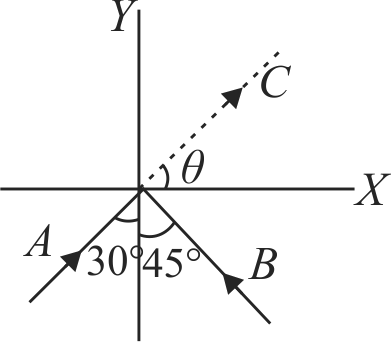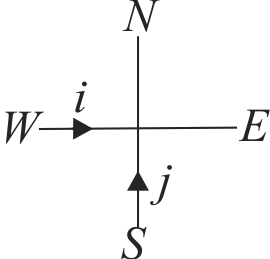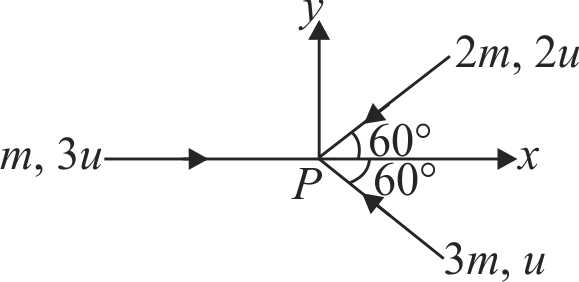355325
Two particles \(A\) and \(B\) of equal mass \(M\) are moving with the same speed \(v\) as shown in the figure. They collide completely inelastically and move as a single particle \(C\). The angle \(\theta\) that the path of \(C\) makes with the \(X\)-axis is given by
355325
Two particles \(A\) and \(B\) of equal mass \(M\) are moving with the same speed \(v\) as shown in the figure. They collide completely inelastically and move as a single particle \(C\). The angle \(\theta\) that the path of \(C\) makes with the \(X\)-axis is given by
355325
Two particles \(A\) and \(B\) of equal mass \(M\) are moving with the same speed \(v\) as shown in the figure. They collide completely inelastically and move as a single particle \(C\). The angle \(\theta\) that the path of \(C\) makes with the \(X\)-axis is given by
355325
Two particles \(A\) and \(B\) of equal mass \(M\) are moving with the same speed \(v\) as shown in the figure. They collide completely inelastically and move as a single particle \(C\). The angle \(\theta\) that the path of \(C\) makes with the \(X\)-axis is given by
355325
Two particles \(A\) and \(B\) of equal mass \(M\) are moving with the same speed \(v\) as shown in the figure. They collide completely inelastically and move as a single particle \(C\). The angle \(\theta\) that the path of \(C\) makes with the \(X\)-axis is given by


